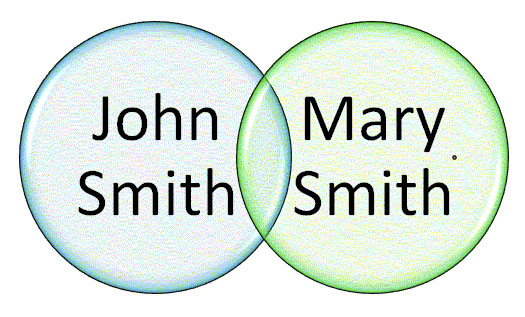Ten Innovations in Online Genealogy Search - Part II
Insight #6 – Creatively Combine Names
This insight is an exercise in reverse thinking. As we have already discussed, search is a game of probabilities. Search is also all about the proximity of words (in particular names) on a page. How can we use these two facts to our advantage? For example, how can we find someone with a very common name? How about taking the uncommon approach of trying to search for two people at once?
Consider the following example: We need to find someone named John Smith. Suppose John was married to someone named Mary Smith. How are we going to find John and Mary Smith? The answer lies in making probabilities work for you. John Smith is a common name. So is Mary Smith. But how common is it to find a record that contains both the names John Smith and Mary Smith?
As it turns out, it is not anywhere near as common as trying to look for each name individually because not every John Smith in the world happens to have a spouse named Mary.
This is demonstrated in the diagram below. The John Smith circle represents all records that contain the name John Smith. The Mary Smith circle represents all records that contain the name Mary Smith. The area where the two circles overlap contain all the genealogy records that mention both John Smith and Mary Smith.

As the diagram would suggest, a record set that is a combination of the two names is much smaller than a record set of either name individually. In many instances, the combination of two names can be orders of magnitude smaller than one name by itself. This can significantly increase your chances of successfully finding a useful ancestral record.
How can you search for two people at once? Fundamentally, this process works because certain classes of genealogy records list more than one person. As an example, marriage records list two adults, birth records of children usually list both parents and some cemetery records list spouses. Looking for two people at once is a great way to look for ancestors with common names. In the example above with John and Mary Smith you would perform the following search:

Since search engines look for words by proximity, the word that is common to both names (in this case Smith) needs to go in the middle to get the best results. In effect, the two first names straddle the last name. At GenealogyInTime Magazine, we call this genealogy search technique a last name straddle.
You could even carry this technique one step forward. Suppose Mary Smith’s maiden name was Johnson. You could then look for:


